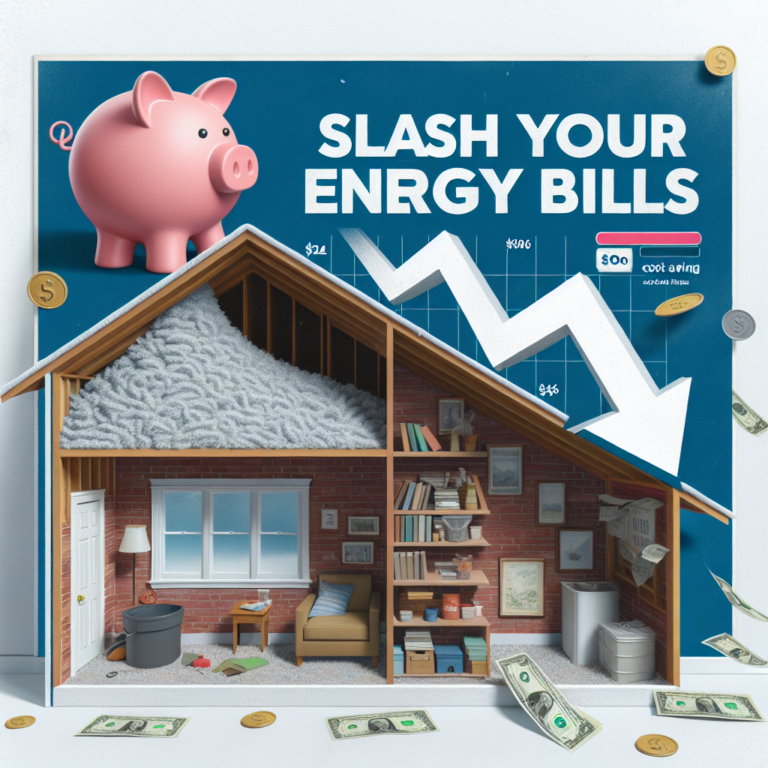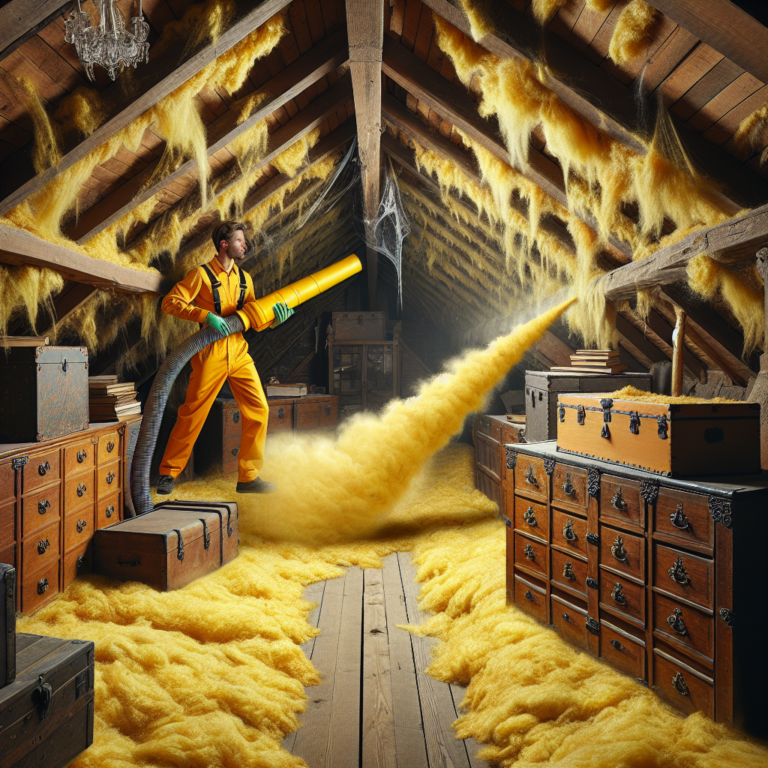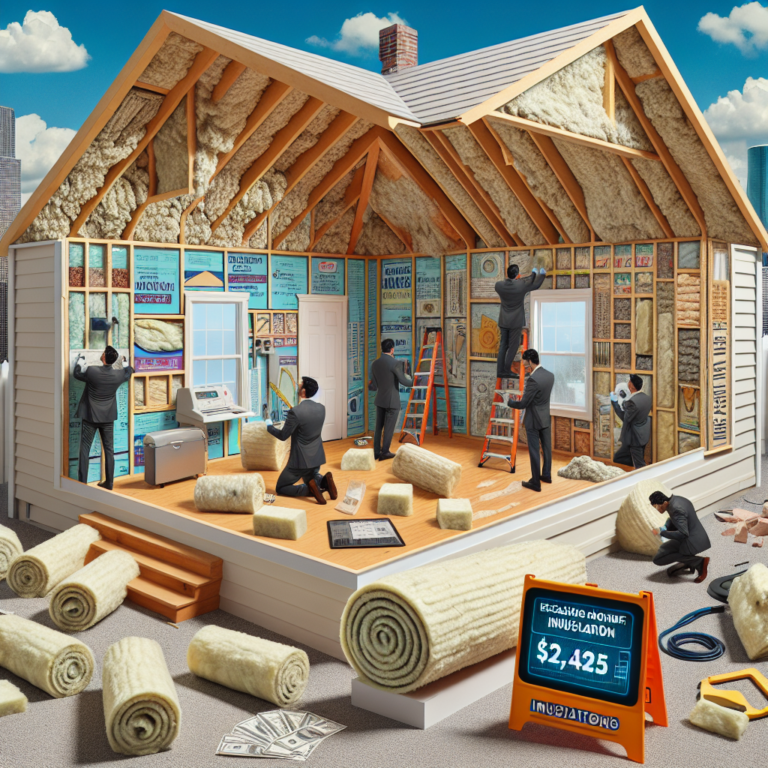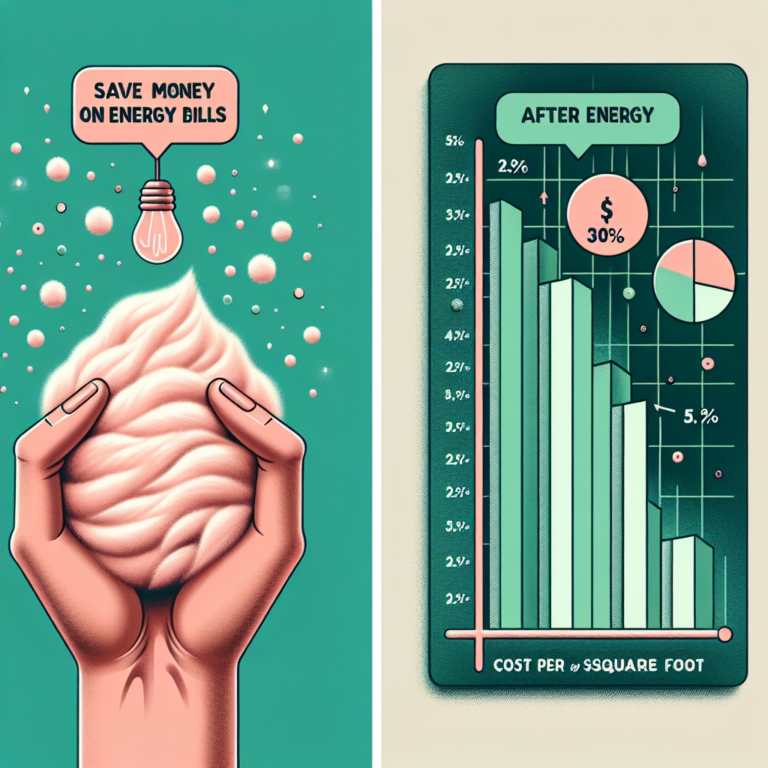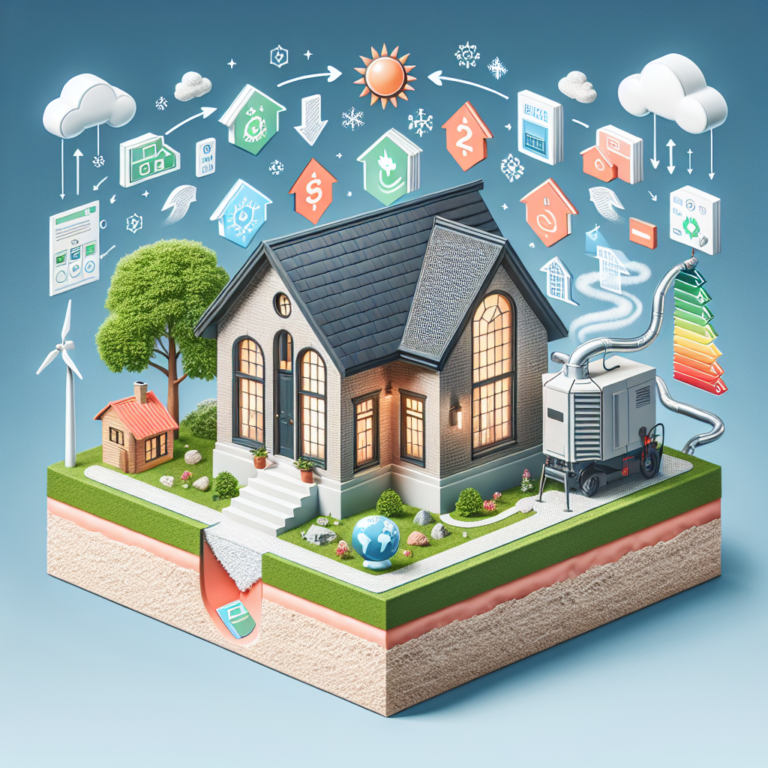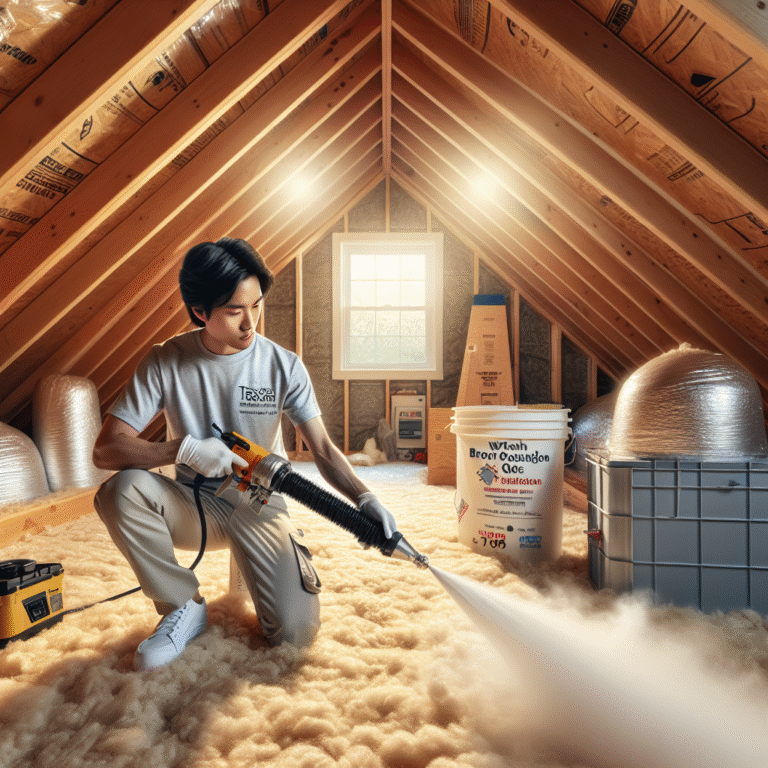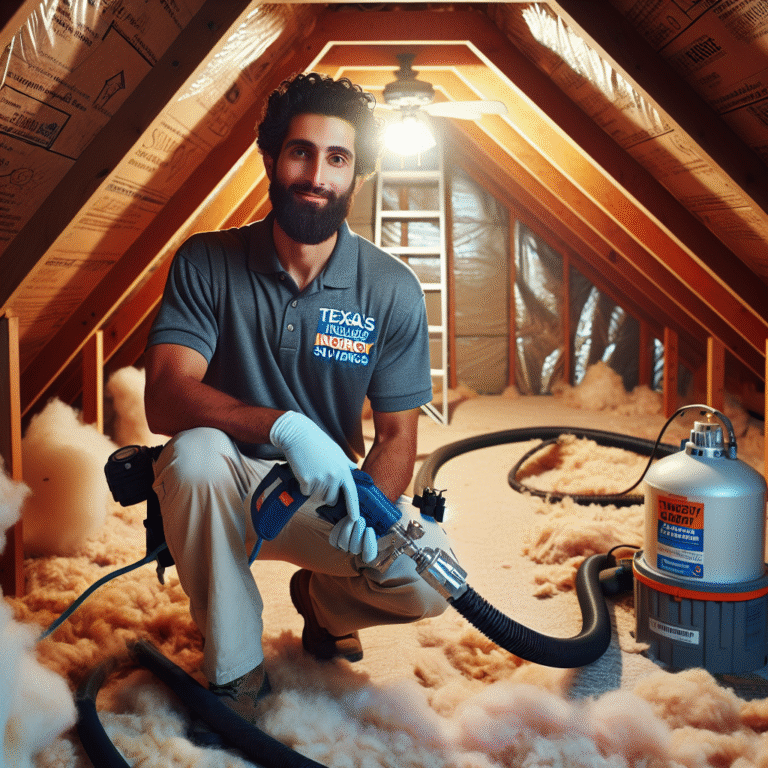-
Table of Contents
“Experience the comfort and efficiency of blown cotton insulation – the natural choice for your home.”
Introduction
Blown cotton insulation is a type of insulation material that is made from recycled cotton fibers. It is commonly used in residential and commercial buildings to provide thermal and acoustic insulation. This eco-friendly insulation option offers several benefits, including energy efficiency, fire resistance, and sound absorption. In this insulation method, the cotton fibers are blown into the desired space, creating a dense layer that effectively traps heat and reduces noise. Blown cotton insulation is becoming increasingly popular due to its sustainability and effectiveness in creating a comfortable and energy-efficient environment.
Benefits of Blown Cotton Insulation for Homeowners
Blown cotton insulation is a type of insulation that is made from recycled cotton fibers. It is becoming increasingly popular among homeowners due to its numerous benefits. In this article, we will explore the benefits of blown cotton insulation and why it is a great choice for homeowners.
First and foremost, blown cotton insulation is an eco-friendly option for insulation. As mentioned earlier, it is made from recycled cotton fibers, which means it is a sustainable and renewable material. This is a huge advantage for homeowners who are looking to reduce their carbon footprint and make environmentally conscious choices for their homes. By choosing blown cotton insulation, homeowners can contribute to reducing waste and promoting a greener environment.
Another benefit of blown cotton insulation is its superior thermal performance. It has a high R-value, which is a measure of an insulation material’s ability to resist heat flow. This means that blown cotton insulation can effectively keep your home warm in the winter and cool in the summer. It also helps to reduce energy consumption, as your heating and cooling systems will not have to work as hard to maintain a comfortable temperature. This, in turn, can lead to significant cost savings on your energy bills.
In addition to its thermal performance, blown cotton insulation also has excellent soundproofing properties. The dense fibers of the insulation material can absorb sound waves, reducing noise levels in your home. This is especially beneficial for homeowners who live in noisy areas or have loud neighbors. Blown cotton insulation can create a quieter and more peaceful living environment, making it a popular choice for bedrooms, home offices, and other areas where noise control is important.
One of the most significant advantages of blown cotton insulation is its non-toxic nature. Unlike traditional insulation materials such as fiberglass, blown cotton insulation does not contain any harmful chemicals or irritants. This makes it a safe option for homeowners, especially those with children or pets. It also means that installation is a much more straightforward and less hazardous process, as there is no need for protective gear or special equipment.
Furthermore, blown cotton insulation is a versatile option that can be used in various areas of the home. It can be blown into walls, attics, and crawl spaces, making it an ideal choice for both new construction and retrofitting projects. It can also be used to insulate around pipes, wires, and other obstacles, providing a seamless and efficient insulation solution. This versatility makes blown cotton insulation a cost-effective option for homeowners, as it can be used in multiple areas of the home without the need for different types of insulation.
Last but not least, blown cotton insulation is a durable and long-lasting option for homeowners. It does not settle or compress over time, ensuring that your home remains adequately insulated for years to come. It is also resistant to mold, mildew, and pests, making it a low-maintenance choice for homeowners. This can save you time and money on future repairs or replacements.
In conclusion, blown cotton insulation offers numerous benefits for homeowners. It is eco-friendly, has excellent thermal and soundproofing properties, is non-toxic, versatile, and durable. With all these advantages, it is no wonder that more and more homeowners are choosing blown cotton insulation for their homes. If you are looking to improve your home’s energy efficiency, reduce noise levels, and make an environmentally conscious choice, consider blown cotton insulation as your insulation solution.
Comparing Blown Cotton Insulation to Fibreglass Insulation

Blown cotton insulation is a relatively new type of insulation that has gained popularity in recent years. It is made from recycled denim and cotton fibers, making it an eco-friendly option for insulation. But how does it compare to the more traditional fibreglass insulation? In this article, we will take a closer look at blown cotton insulation and compare it to fibreglass insulation in terms of effectiveness, cost, and environmental impact.
Effectiveness is a crucial factor to consider when choosing insulation for your home. After all, the main purpose of insulation is to keep your home warm in the winter and cool in the summer. Blown cotton insulation has a higher R-value, which is a measure of thermal resistance, compared to fibreglass insulation. This means that it is more effective at preventing heat transfer and keeping your home at a comfortable temperature. Additionally, blown cotton insulation is less prone to settling, which can create gaps and reduce its effectiveness over time. On the other hand, fibreglass insulation can settle and lose its R-value over time, especially in areas with high humidity.
Another important consideration when comparing these two types of insulation is cost. Blown cotton insulation is generally more expensive than fibreglass insulation. This is because it is made from recycled materials, which can be more costly to produce. However, the initial cost of blown cotton insulation can be offset by its long-term benefits. As mentioned earlier, it has a higher R-value and is less prone to settling, which means it can save you money on energy bills in the long run. Additionally, blown cotton insulation is easier to install, which can save you money on labor costs.
When it comes to environmental impact, blown cotton insulation is the clear winner. It is made from recycled materials, which reduces the amount of waste in landfills and decreases the need for new materials to be produced. On the other hand, fibreglass insulation is made from glass fibers, which are not biodegradable and can take hundreds of years to decompose. Furthermore, the production of fibreglass insulation requires a significant amount of energy and emits harmful pollutants into the environment. Blown cotton insulation, on the other hand, has a much lower carbon footprint and is considered a more sustainable option.
In terms of installation, both blown cotton and fibreglass insulation have their advantages. Blown cotton insulation is typically installed using a machine that blows the insulation into the desired area, making it easier to reach tight spaces and irregularly shaped areas. This can be especially beneficial for older homes with unique layouts. On the other hand, fibreglass insulation is available in pre-cut batts or rolls, making it easier for DIY installation. However, it can be more challenging to install in hard-to-reach areas, and the fibers can be irritating to the skin and lungs.
In conclusion, blown cotton insulation and fibreglass insulation both have their strengths and weaknesses. Blown cotton insulation is more effective, has a lower environmental impact, and is easier to install in hard-to-reach areas. However, it is more expensive upfront. On the other hand, fibreglass insulation is more affordable, easier to install for DIY projects, but has a lower R-value and a higher environmental impact. Ultimately, the choice between these two types of insulation will depend on your budget, priorities, and the specific needs of your home. Whichever option you choose, proper insulation is essential for a comfortable and energy-efficient home.
The Environmental Impact of Using Blown Cotton Insulation in Your Home
Blown cotton insulation is a type of insulation material that is gaining popularity among homeowners due to its eco-friendly properties. Made from recycled denim and cotton fibers, this insulation option offers a sustainable and environmentally friendly alternative to traditional insulation materials such as fiberglass and foam.
One of the main benefits of using blown cotton insulation in your home is its low environmental impact. Unlike other insulation materials, blown cotton insulation does not contain harmful chemicals or emit toxic fumes. This makes it a safe and healthy choice for both the environment and your family.
In addition, blown cotton insulation is made from recycled materials, reducing the amount of waste that ends up in landfills. According to the Environmental Protection Agency (EPA), the construction industry generates about 600 million tons of waste every year, with a significant portion coming from insulation materials. By using blown cotton insulation, you are not only reducing your carbon footprint but also contributing to a more sustainable future.
Furthermore, blown cotton insulation has a lower embodied energy compared to other insulation materials. Embodied energy refers to the amount of energy required to produce, transport, and install a product. Since blown cotton insulation is made from recycled materials, it requires less energy to manufacture, resulting in a lower carbon footprint.
Another environmental benefit of using blown cotton insulation is its ability to reduce energy consumption in your home. Proper insulation is crucial in maintaining a comfortable indoor temperature, especially during extreme weather conditions. By using blown cotton insulation, you can reduce the amount of energy needed to heat or cool your home, resulting in lower energy bills and a reduced impact on the environment.
Moreover, blown cotton insulation has a longer lifespan compared to other insulation materials. This means that it will not need to be replaced as frequently, reducing the amount of waste generated from insulation materials. Additionally, blown cotton insulation is biodegradable, meaning it will not sit in landfills for hundreds of years like other insulation materials.
Aside from its environmental benefits, blown cotton insulation also offers practical advantages for homeowners. It is easy to install, making it a popular choice for DIY projects. It can also be blown into hard-to-reach areas, ensuring that every nook and cranny of your home is properly insulated.
Furthermore, blown cotton insulation has excellent soundproofing properties, making it a great choice for reducing noise pollution in your home. This is especially beneficial for those living in busy urban areas or near highways.
In conclusion, blown cotton insulation offers numerous environmental benefits that make it a sustainable and eco-friendly choice for homeowners. Its low environmental impact, use of recycled materials, and energy-saving properties make it a top choice for those looking to reduce their carbon footprint and contribute to a greener future. Additionally, its practical advantages and ease of installation make it a convenient option for homeowners looking to improve the insulation in their homes. By choosing blown cotton insulation, you are not only making a positive impact on the environment but also creating a healthier and more comfortable living space for you and your family.
Q&A
1) What is blown cotton insulation?
Blown cotton insulation is a type of insulation material made from recycled cotton fibers. It is typically used in buildings to improve energy efficiency and reduce noise levels.
2) How is blown cotton insulation installed?
Blown cotton insulation is installed by using a special machine to blow the fibers into the desired space, such as walls or attics. The fibers are then evenly distributed and create a dense layer of insulation.
3) What are the benefits of blown cotton insulation?
Blown cotton insulation has several benefits, including being environmentally friendly, non-toxic, and easy to install. It also has good thermal and sound insulation properties, making it an effective choice for improving energy efficiency and reducing noise levels in buildings. Additionally, it is a cost-effective option compared to other types of insulation materials.
Conclusion
In conclusion, blown cotton insulation is a type of insulation material made from recycled cotton fibers. It is a sustainable and eco-friendly option for insulating homes and buildings. It offers excellent thermal and sound insulation properties, as well as being resistant to fire and pests. Additionally, blown cotton insulation is easy to install and does not release harmful chemicals into the environment. Overall, it is a great choice for those looking for an environmentally-friendly and effective insulation solution.



